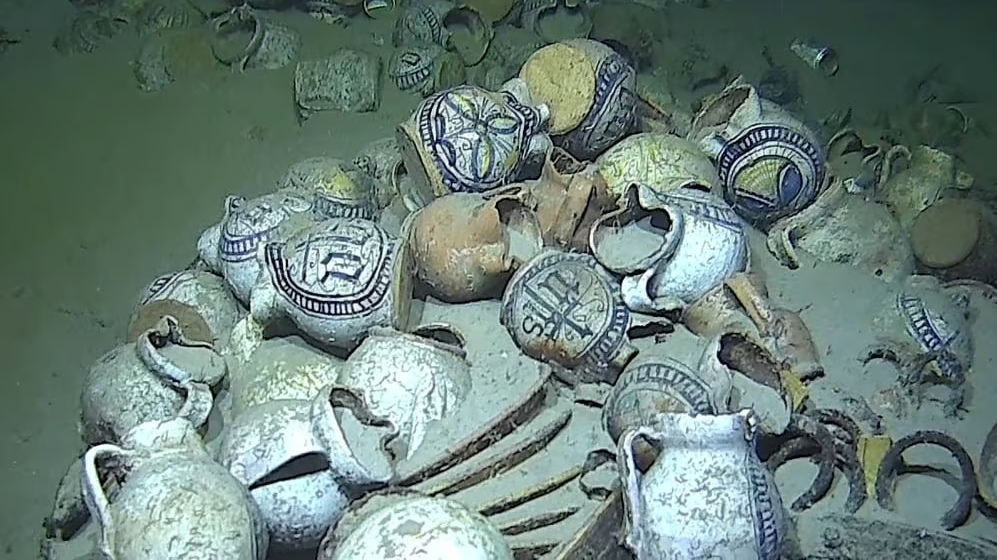A mission conducted by the French Navy has led to the discovery of a shipwreck more than 2,500 meters deep in the Mediterranean Sea—the deepest ever recorded in French territorial waters. The cargo, made up of Ligurian ceramics, is in an exceptional state of preservation.
A team from the French Navy made this remarkable archaeological find in the depths off the coast of Ramatuelle, a town in the Var department of southern France. Located more than 2,500 meters beneath the surface, the previously unknown 16th-century merchant vessel was detected during a military seabed mastery operation. Named Camarat 4, after the nearby Cap Camarat and because it is the fourth cultural maritime asset recorded in the area, the shipwreck is a unique discovery due to its depth and outstanding preservation.
« This is the deepest shipwreck ever discovered in French territorial waters, » announced Arnaud Schaumasse, director of DRASSM (the Department of Underwater Archaeological Research, based in L’Estaque, Marseille), during a press briefing held aboard their research vessel, Alfred Merlin, in Nice.
A Fortuitous Discovery Made Possible by Cutting-Edge Technology
The shipwreck was detected during the Calliope 25.1 military mission, launched in early March 2025 by the French Navy. This exploratory operation aimed to strengthen France’s capabilities in seabed surveillance and knowledge. The wreck was first spotted by an autonomous underwater vehicle.
“The sonar picked up something significant, so we went back with the camera on that autonomous unit, and then again with a remotely operated vehicle to capture high-resolution footage,” explained Thierry de la Burgade, Deputy Maritime Prefect for the Mediterranean.
A Second Dive Reveals Details of a 16th-Century Shipwreck Preserved in Remarkable Condition
A second dive, carried out a few weeks later using a remotely operated vehicle (ROV) from the company Louis-Dreyfus Travocean aboard the BSAA Jason, enabled high-precision filming of the wreck—without physically disturbing it. The footage was then sent to DRASSM for analysis. Measuring 30 meters long and 7 meters wide, the wreck is believed to be a 16th-century merchant ship, likely of Ligurian origin, as suggested by part of its visible cargo: around 200 polychrome faience jugs decorated with religious and geometric motifs, as well as about 100 plates. Onboard elements such as anchors, cannons, and cooking cauldrons were also identified. “Many remnants remain partially buried beneath the sand and will need to be studied more thoroughly,” DRASSM noted.
A Frozen, Unique, and Preserved Archaeological Site
At such extreme depths, no recovery operation has taken place since the ship sank, allowing the wreck to remain untouched by looting or environmental degradation. “Thanks to its depth, which has prevented any form of recovery or plundering, this site has remained intact—as if time had stopped. This is exceptional and offers tremendous archaeological potential,” explained Marine Sadania, the DRASSM archaeologist in charge of the PACA region.
The site thus presents a rare opportunity to study an almost entirely intact archaeological context, frozen in time for over 400 years. DRASSM is now planning a series of scientific investigations: 3D mapping of the site, targeted sampling, specialized studies on ceramics, artillery, and naval architecture. The site may also be used for virtual modeling and public exhibitions, as well as awareness campaigns on marine pollution—since even this remote wreck has not escaped the presence of micro- and macro-waste.
Source : laprovence



